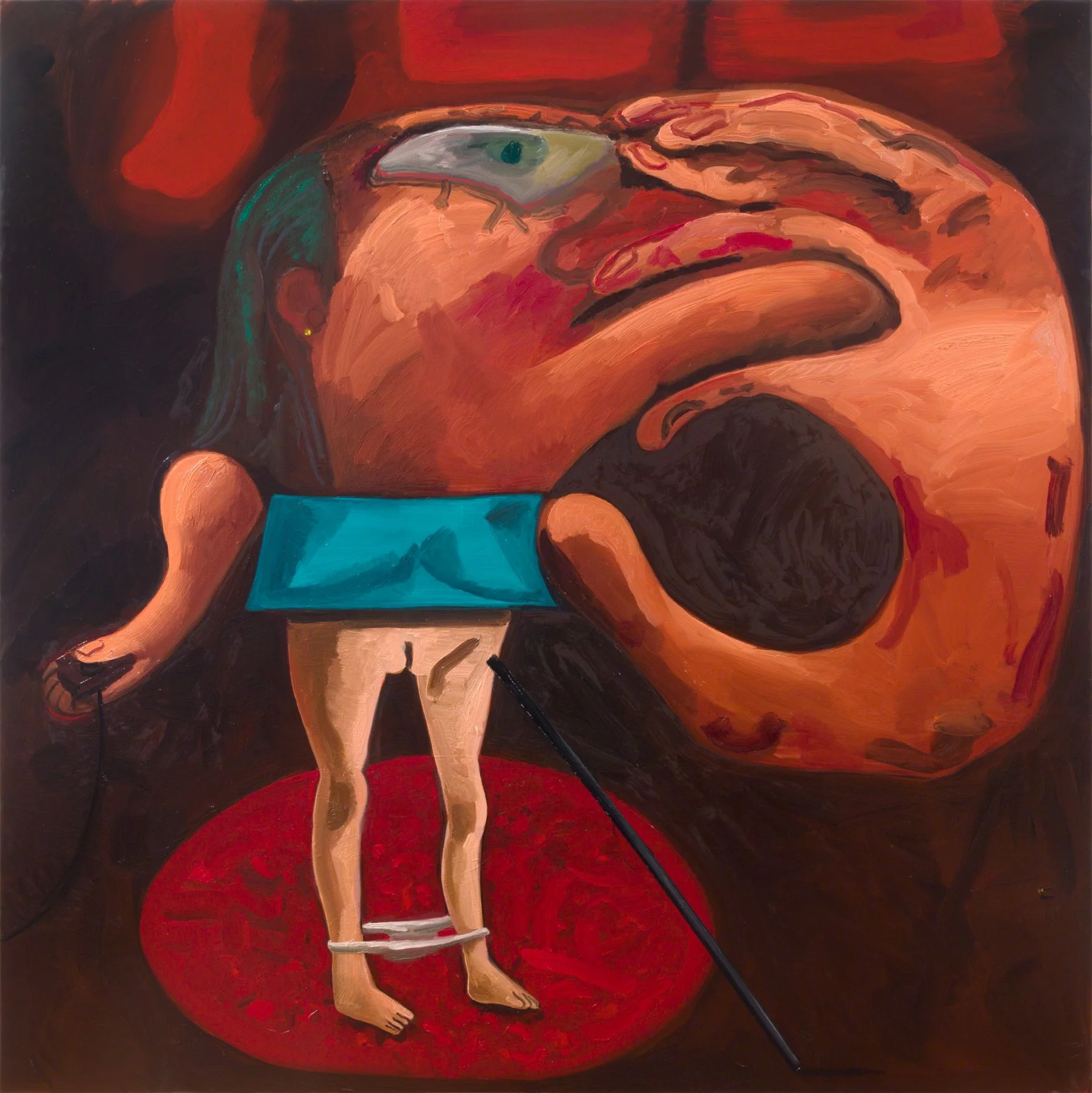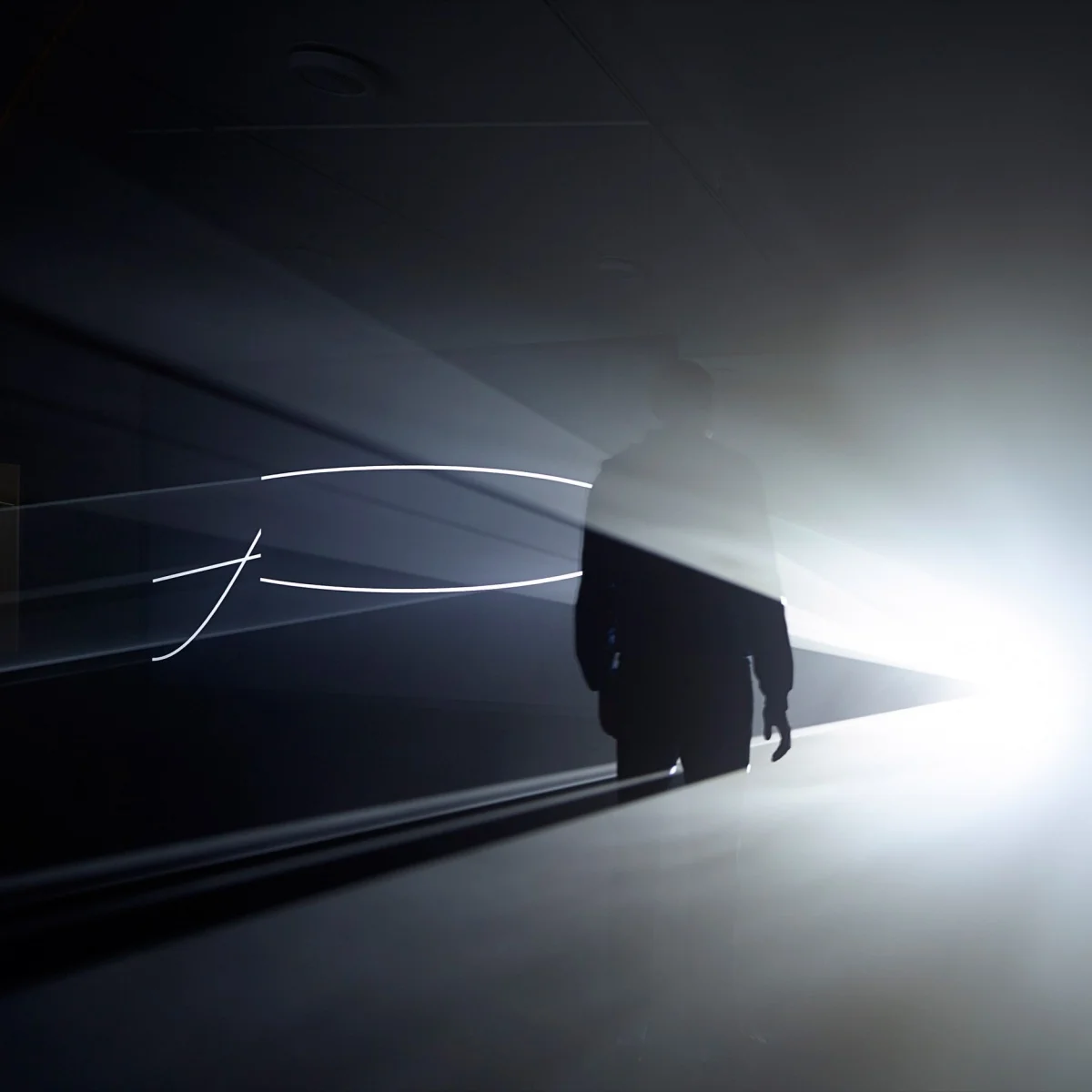Rodney Graham
New York, 555 West 21st Street
In a suite of new lightbox works, Graham continues to probe the semi-conscious creation of cultural archetypes. Begun in 2007, Graham's lightboxes synthesize and expand upon his practices in painting, photography, sculpture and film, using highly detailed set design and arcane conceptual inspirations to point to the paradigmatic functioning of stock characters from the realms of art, Hollywood film, music, history and the social world.
Rodney Graham, “Vacuuming the Gallery”, 1949
For Vacuuming The Gallery, 1949, 2018, Graham's monumental piece takes as its inspiration a photograph of New York gallerist Samuel Kootz smoking a pipe in his own gallery during a Picasso exhibition in 1949. On the walls in this image are a series of Graham's own abstract paintings, part of a series of variations based on a single watercolor by Alexander Rodchenko (Abstract Composition, 1941). Graham inhabits a role based on the image of Kootz, vacuuming the floors of his apartment-cum-gallery in a quaint-seeming gesture of domesticity. His taciturn, smug expression seems to translate not only the uptown art dealer persona, but the upending of that persona in performing a menial, unusually gendered task. Graham's Rodchenko-inspired paintings hang in the current exhibition as well, their anachronistic expressionist tendencies magnified by the contextual disconnect between the tableau the lightbox portrays and the contemporary tendency to view art in a sleek white cube.
Rodney Graham Tattooed Man on Balcony, 2018
Tattooed Man on Balcony, 2018, follows from a poem Graham penned in the style of Mallarme that was intended as an instructional guide for a tattoo artist. The image described, in which Popeye is clad in a deep-sea diving suit battling a giant squid, has been extended to an entire phalanx of characters from Popeye's compatriots in the Thimble Theater. The man's pompadour and spread-collar, open to the chest 50s-style shirt suggest an aging rockabilly fan whose most whimsical and hardscrabble years are behind him. Perched on the balcony of an apartment featuring a particularly Vancouver-centric brand of vernacular modernism, Graham again creates a strange kind of third-person self-portrait, as if this character is simultaneously himself, a model, and a type of standardized, unconscious prototype - an 'extra' of sorts.
A different type of stock character emerges in Remorseful Hunter, 2019, inspired by a found thrift store painting. Graham takes the guise of a mountain man with a rifle apparently in the midst of a remorseful existential crisis, sitting on a rock overlooking a Caspar David Fridrich-style landscape. He appears overtaken by sentimentality, a kind of existential Elmer Fudd who suddenly finds himself identified only with a sympathetic squirrel. Another type of "man with beast" portrait exists in Central Questions of Philosophy, 2018, a lightbox work inspired by two versions of the Pelican paperback cover for the philosopher AJ Ayer's titular book. In one version, the philosopher poses stoically in his home with a learned smirk, and in the other, he assumes the same pose, this time with a dog on his lap. The work nods to Ayer's work as a logical empiricist, positing two versions of reality: in one, a philosopher sits in a chair; and in the other, a philosopher and a dog sit in a chair. Graham is Ayer, Ayer is Graham, a dog is a dog is a dog.








